
Child Spacing: When Should I Have My Second Child
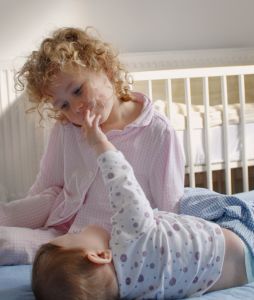 Our family cannot leave the house without at least two people wanting to know if my 4 year old and 2 year old are twins. While my children are separated by 2 years and 3 months, because my oldest has Down syndrome, they are about the same size and are at about the same level in many developmental areas. My youngest child learned how to walk six months after my firstborn learned how to walk and we have been in “twin mode” ever since. It’s been exhausting and rewarding all at the same time! There is a constant pursuit among mothers of all races, religions, cultures, and backgrounds to find the magical interval between pregnancies.
Our family cannot leave the house without at least two people wanting to know if my 4 year old and 2 year old are twins. While my children are separated by 2 years and 3 months, because my oldest has Down syndrome, they are about the same size and are at about the same level in many developmental areas. My youngest child learned how to walk six months after my firstborn learned how to walk and we have been in “twin mode” ever since. It’s been exhausting and rewarding all at the same time! There is a constant pursuit among mothers of all races, religions, cultures, and backgrounds to find the magical interval between pregnancies.
“Baby Bunching” seems to be a growing trend among mothers. “Baby Bunching” is a term two mothers have coined to describe siblings who are less than two years apart. Linda and Cara have a blog devoted to mothers of “twiblings.” Their blog contains articles that address the experiences of parenting children who are very close in age. While my children are a few months out of the spacing requirements of “official baby bunchers,”I can most certainly appreciate the challenges, rewards, and unique chaos that baby bunchers experience due to my children being developmentally very close to each other, even though their chronological age is over two years.
Some of the benefits of having children who are close developmentally I have found is you get the pregnancy and newborn stages over and behind you in one swoop. Not that I didn’t enjoy my pregnancies, but there are some things I don’t want to do forever! Another advantage to having “twiblings” is our children play with the same toys and have the same interests. We never had to hide our older child’s choking hazard toys from our curious crawler. In our house everyone still naps {or at least goes to their room for an hour for quiet time}. My firstborn was so easy going, that the transition from one to two children was really easy. Our first child adjusted so well to her new brother, and I believe that in part is because she was younger. One of my favorite things about having children close in age is their love for each other. It is becoming more difficult to distinguish who has the dominant role in their relationship and they have a two sided adoration for each other at a very young age.
Some of the challenges I have found in having children so close in age is the toddler stage is tough all the way around! Both of my children are constantly going in separate directions. If nap time/quiet time gets skipped, I have TWO incredibly angry toddlers who I cannot yet bribe with McDonalds. I have to do everything twice, many times each day…change two diapers, make sure two children make it safely up and down the stairs, clean up two messes of everything, work on potty training with two children at a time, etc… I pray to God imagine that the toddler stage is probably one of the hardest in baby bunching. There are moments when I daydream about adopting a seven year old girl to help me with my little “twiblings!” It may be an illusion, but it seems like my friends who have spaced their children a few years apart have an easier time doing simple things like grocery shop and go on trips to the park. However, it may just be my cynacism that has evolved from having two toddlers.
What are some other opinions on child spacing?
- Dr. Sears said it best when he said, “There is seldom the ideal time for a child. If we always waited for ‘the perfect time’ to have a child, we would probably have two instead of eight.” He recommends spacing them two or three years apart if you have a baby who is a high needs baby in an effort to avoid parent burn out and to give parents more energy to devote to that more demanding child. However, if you have an easy infant, spacing them very close in age typically works great, according to Dr. Sears!
- The New England Journal of Medicine believes that spacing children 18-23 months has the healthiest outcomes for both mom and baby. Low birthweight, prematurity, and small sized babies are higher risks in children spaced less than 18 months and more than 23 months apart.
- Some argue that having children three years apart is the magical child spacing number. They say that the older child is old enough to understand more about their new sibling’s arrival, yet they are close enough in age to grow up playing together.
While it’s fun to weigh pros and cons of different child spacing philosophies, I think this is such a personal decision for each family and what works for some families doesn’t always work for all families. Also, there are outside factors parents should consider before choosing to have another child; most importantly, the health of their relationship with one another.
What do you think is the magic child spacing age difference? What have you liked about the spacing between your children? What has been challenging about their age differences?
Share the fun: Email + Del.icio.us + Digg + Technorati


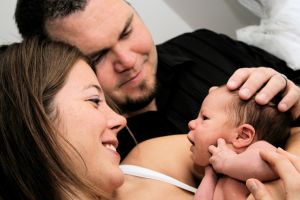 I sometimes want to wear a shirt that says, “I am due St. Patrick’s Day, I don’t know the gender, and I feel fine!” I get asked those three questions to those answers all the time. Many people ask me “Do you know what your are having?” In fact we did not find out the gender of our first baby and we have not found out the gender of our second one either. Everyone has their own reasons for revealing the gender in the Ultrasound Room or the Delivery Room. Here are a few reasons why we chose to wait. (I would love to hear your reasons for finding out before the baby comes in comments!)
I sometimes want to wear a shirt that says, “I am due St. Patrick’s Day, I don’t know the gender, and I feel fine!” I get asked those three questions to those answers all the time. Many people ask me “Do you know what your are having?” In fact we did not find out the gender of our first baby and we have not found out the gender of our second one either. Everyone has their own reasons for revealing the gender in the Ultrasound Room or the Delivery Room. Here are a few reasons why we chose to wait. (I would love to hear your reasons for finding out before the baby comes in comments!)
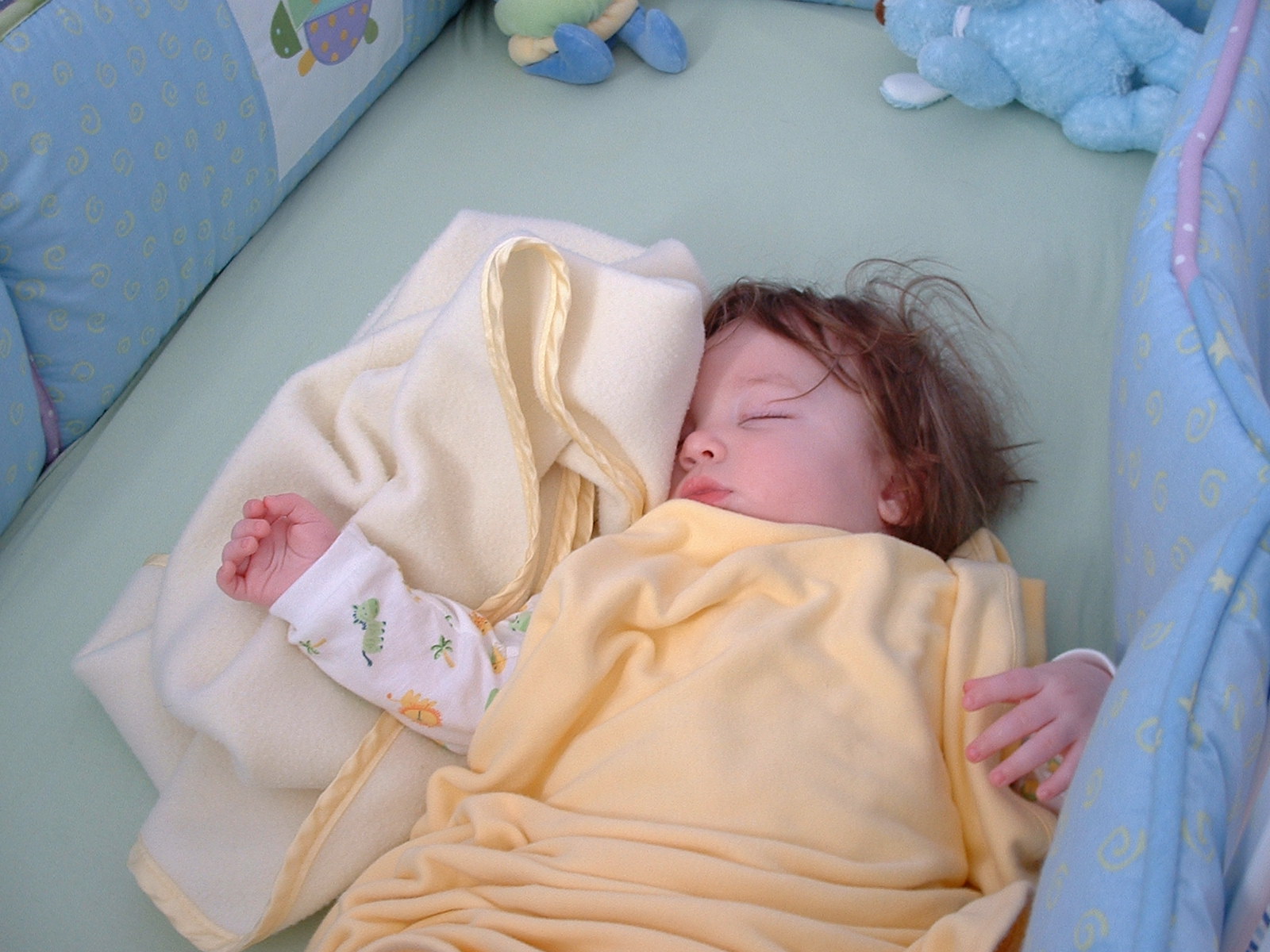
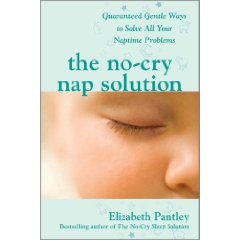
 When my husband and I were childless we didn’t not understand what life was like for our friends who had kids. We sometimes wondered why my sister-in-law would leave early from a family dinner so her kids wouldn’t miss their eight o’clock bedtime. We didn’t understand why one night would be such a big deal.
When my husband and I were childless we didn’t not understand what life was like for our friends who had kids. We sometimes wondered why my sister-in-law would leave early from a family dinner so her kids wouldn’t miss their eight o’clock bedtime. We didn’t understand why one night would be such a big deal.
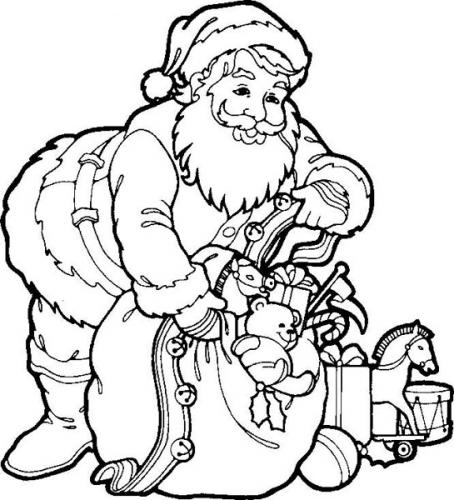 As we are knee-deep in the holiday season, I am realizing something kinda important: Lucy has learned who Santa Claus is. (She’ll be three in a couple of months.) When we were decorating our tree a week ago, she said, “That’s Santa!” We think she picked up on it from an episode of “Dora the Explorer”. She is no longer an oblivious baby with no need to know about Santa one way or another. We’re now faced with the question: What do we teach her about Santa? People are always asking us at Christmastime if we “do Santa” with our kids, especially friends and people we know from our church. Apparently, it’s a tradition still embraced by most of the church-going folks in my own community.
As we are knee-deep in the holiday season, I am realizing something kinda important: Lucy has learned who Santa Claus is. (She’ll be three in a couple of months.) When we were decorating our tree a week ago, she said, “That’s Santa!” We think she picked up on it from an episode of “Dora the Explorer”. She is no longer an oblivious baby with no need to know about Santa one way or another. We’re now faced with the question: What do we teach her about Santa? People are always asking us at Christmastime if we “do Santa” with our kids, especially friends and people we know from our church. Apparently, it’s a tradition still embraced by most of the church-going folks in my own community.



